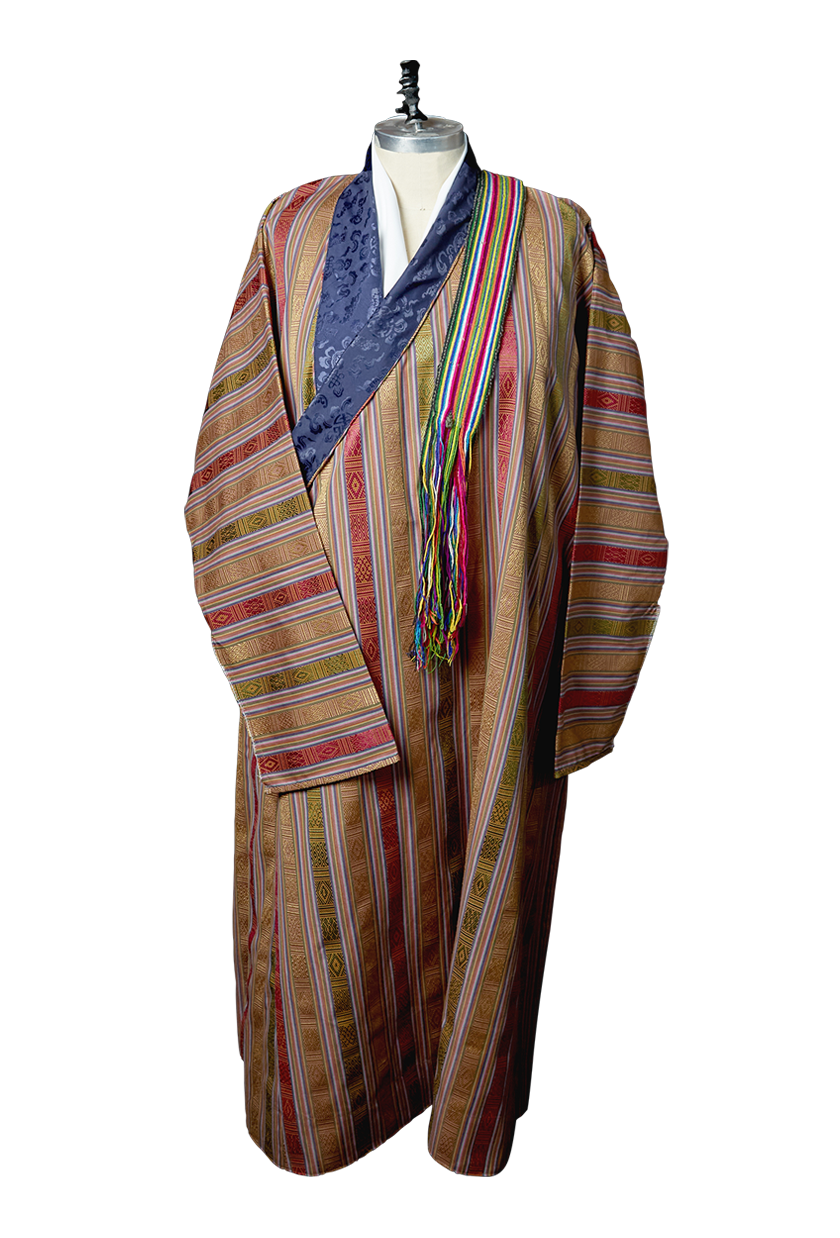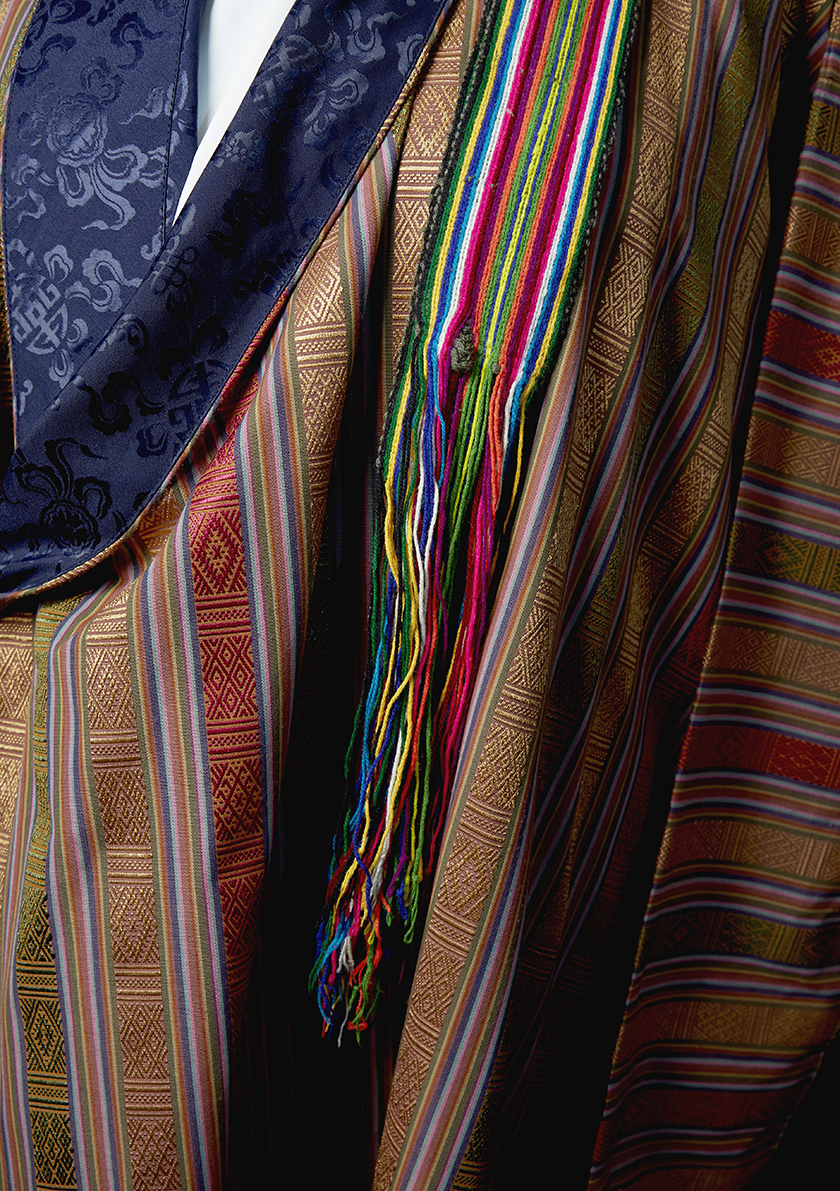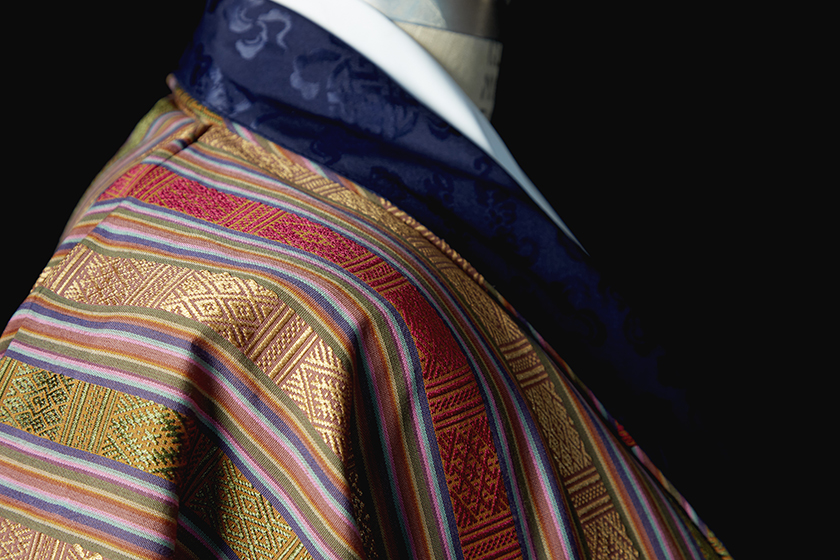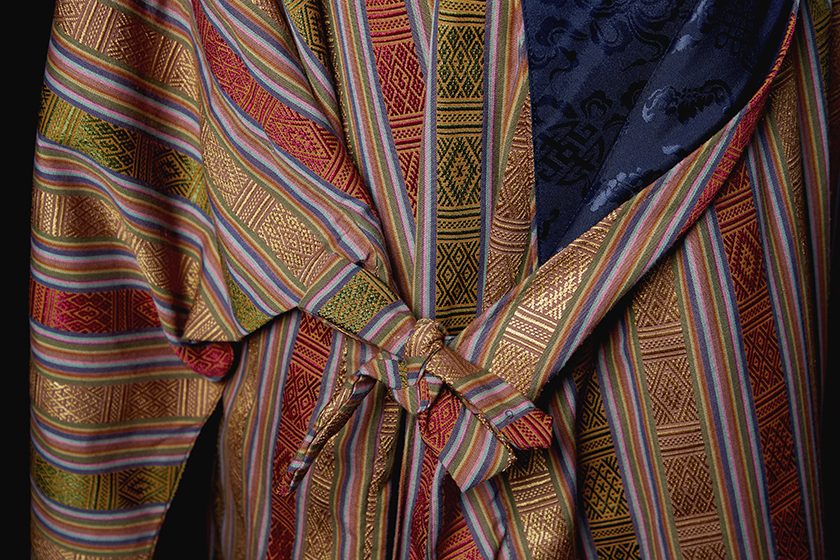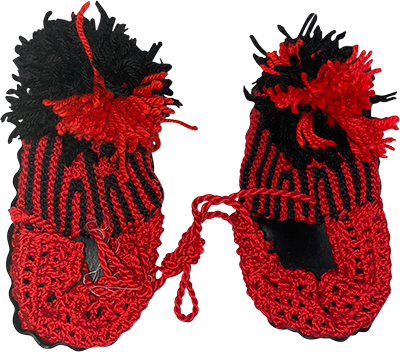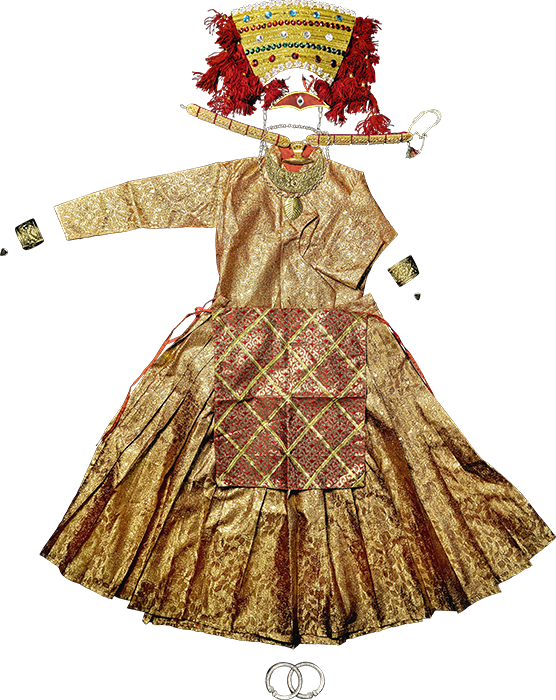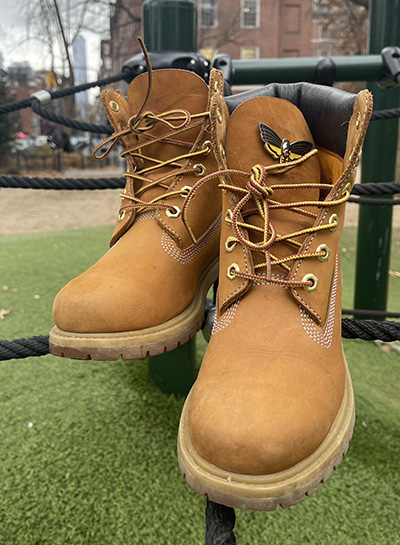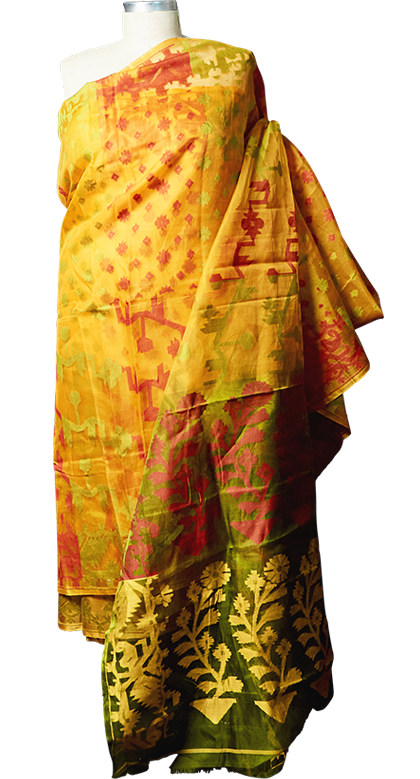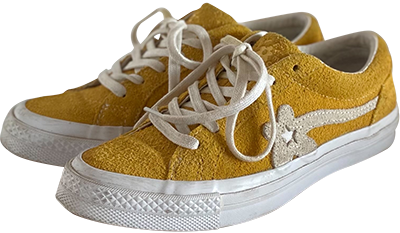Gho
ABOUT
Bhutan, a small country in the Himalayas, is globally praised for the preservation of its unique culture. The Bhutan government places a great emphasis on a collective national identity for its people, which is achieved through measures such as a compulsory national dress. This garment, called gho, is worn by men. The brightly colored gho features a knee length gown, tied around the waist with a belt of cloth known as the Kera (not to be confused with Kira, the national dress worn by women). A gho is usually worn over a shirt, which is cuffed at the wrist and has a prominent collar.
The gho that is worn today was inspired by the founder of Bhutan, Zhabdrung Ngawang Namgyal, who was originally from Tibet. This gho style may have been adapted from the traditional Tibetan chuba worn by nomadic tribes living in the cold, high altitudes of the mountains. Both the gho and the chuba are long gowns held in place by a long sash that secures around an individual’s waistline. However, the Tibetan chuba is worn loosely and mostly off one shoulder, whereas the Bhutanese gho is ironed and more closely fitted to the body.
This particular gho was worn by Tenzin Pelchok from Bhutan on the celebration of the King’s birthday in the Bhuatese American community in New York. While Tenzin’s specific Gho happens to be machine made, he describes the meticulous process of hand dyeing and hand weaving a traditional gho, which requires “immense time and artistic skill” to create the bright variation of patterns for which this garment is famous. Dyeing and weaving a gho is often a hereditary craft, meaning the skills to create the gho have been passed down from mothers to daughters. The rising popularity of machine-made ghos and kiras, as well as Western fashion trends, has put the Bhutanese handweaving industry in danger. However, many people believe that the social significance, great beauty, and undeniable quality of gho and kira will keep the traditionally crafted national dress in high demand.
— Jessica Toomey and Hunain Khan
LISTEN TO MUSIC FROM BHUTAN
Click on Image to View Gallery
ORIGIN
Bhutan
APPROXIMATE DATE
c. 2016
MATERIALS
Machine-woven textile
COLLECTION OF
Tenzin Pelchok
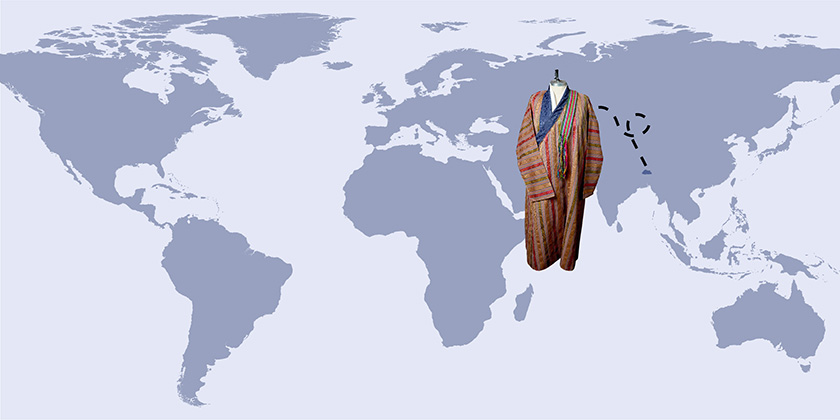
Gho
Click on Image to View Gallery
ABOUT
Bhutan, a small country in the Himalayas, is globally praised for the preservation of its unique culture. The Bhutan government places a great emphasis on a collective national identity for its people, which is achieved through measures such as a compulsory national dress. This garment, called gho, is worn by men. The brightly colored gho features a knee length gown, tied around the waist with a belt of cloth known as the Kera (not to be confused with Kira, the national dress worn by women). A gho is usually worn over a shirt, which is cuffed at the wrist and has a prominent collar.
The gho that is worn today was inspired by the founder of Bhutan, Zhabdrung Ngawang Namgyal, who was originally from Tibet. This gho style may have been adapted from the traditional Tibetan chuba worn by nomadic tribes living in the cold, high altitudes of the mountains. Both the gho and the chuba are long gowns held in place by a long sash that secures around an individual’s waistline. However, the Tibetan chuba is worn loosely and mostly off one shoulder, whereas the Bhutanese gho is ironed and more closely fitted to the body.
This particular gho was worn by Tenzin Pelchok from Bhutan on the celebration of the King’s birthday in the Bhuatese American community in New York. While Tenzin’s specific Gho happens to be machine made, he describes the meticulous process of hand dyeing and hand weaving a traditional gho, which requires “immense time and artistic skill” to create the bright variation of patterns for which this garment is famous. Dyeing and weaving a gho is often a hereditary craft, meaning the skills to create the gho have been passed down from mothers to daughters. The rising popularity of machine-made ghos and kiras, as well as Western fashion trends, has put the Bhutanese handweaving industry in danger. However, many people believe that the social significance, great beauty, and undeniable quality of gho and kira will keep the traditionally crafted national dress in high demand.
— Jessica Toomey and Hunain Khan
ORIGIN
Bhutan
APPROXIMATE DATE
c. 2016
MATERIALS
Machine-woven textile
COLLECTION OF
Tenzin Pelchok

LISTEN TO MUSIC FROM BHUTAN
OTHER OBJECTS FROM THE EXHIBITION

